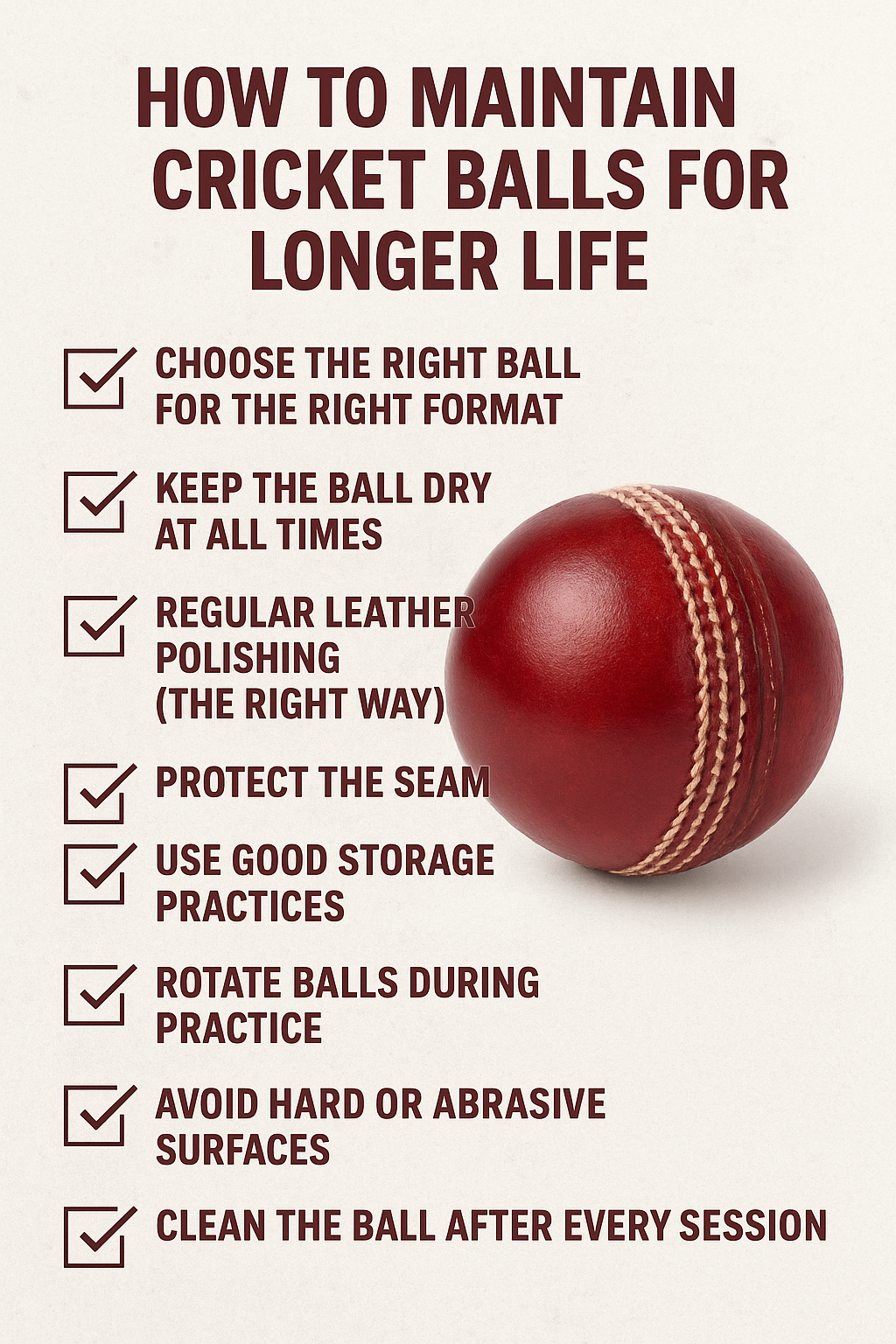How to Maintain Cricket Balls for Longer Life: A USA Guide for Players & Clubs
Cricket is growing fast across the USA, which means more players, more matches—and more cricket balls getting worn out faster than they should. Whether you're a club manager, a coach, or a player carrying your own gear, proper ball maintenance can extend the life of your cricket balls, improve performance, and save money over time.
Here’s a complete, easy-to-follow guide to help your cricket balls last longer.
1. Choose the Right Ball for the Right Format
Before you even begin maintaining a ball, make sure you're using the correct type:
-
Leather balls are ideal for matches and serious training.
-
Synthetic balls are better for heavy practice sessions and beginners.
Using a leather ball on rough practice surfaces (like uneven concrete or backyard turf) will wear it out quickly.
2. Keep the Ball Dry at All Times
Moisture is the enemy of leather.
If a ball gets wet:
-
It becomes heavy
-
The seam weakens
-
The leather softens and cracks later
After a rainy session or dew-heavy evening, wipe the ball thoroughly and let it air-dry naturally. Never use heaters or hair dryers—the extreme heat damages the leather.
3. Regular Leather Polishing (The Right Way)
Conditioning the leather keeps it strong and shiny.
✔ What to use:
-
A thin layer of ball polish, linseed oil, or leather conditioner
-
A soft cotton cloth
✔ What to avoid:
-
Shoe polish
-
Harsh oils
-
Excessive polishing that makes the ball slippery
Apply a very light coat, rub it in gently, and allow it to dry overnight.
4. Protect the Seam
The seam is one of the first parts to wear out.
Tips to maintain it:
-
Avoid picking at loose threads
-
Do not slam the ball on hard ground unnecessarily
-
Rotate bowlers so the ball isn’t repeatedly pitched on the same side
-
After use, check for raised threads and trim them very carefully without cutting into the seam
A strong seam ensures the ball swings and grips the pitch properly for longer.
5. Use Good Storage Practices
Storing cricket balls properly adds weeks (sometimes months) to their lifespan.
Store them:
-
In a cool, dry place
-
Away from direct sunlight
-
In a breathable bag or box (never in plastic)
Some clubs in the USA even store used balls in a canvas bag with silicone gel packets to control moisture.
6. Rotate Balls During Practice
Using one ball for every net session will destroy it fast.
Instead:
-
Keep 3–5 balls in your practice rotation
-
Use newer balls for match prep
-
Use older balls for throwdowns and bowler warm-ups
This method copies what professional teams do—and it works.
7. Avoid Hard or Abrasive Surfaces
Throwing the ball on:
-
Rough concrete
-
Gravel
-
Synthetic turf with exposed rubber
…will scuff and damage the leather instantly.
Stick to proper practice pitches and grass surfaces whenever possible.
8. Clean the Ball After Every Session
A quick clean can make a big difference.
Simple routine:
-
Wipe off dirt, mud, or grass stains
-
Remove debris stuck in the seam
-
Lightly polish it
-
Store properly
It takes two minutes and adds weeks to your ball’s life.
Final Thoughts
Maintaining cricket balls isn’t only for professional players—it's essential for clubs and individuals across the USA who want durability, performance, and value for money. With the right care routine, a good leather ball can last multiple matches and countless training sessions.
Whether you're using SG, Kookaburra, Dukes, or any top brand, these tips can help you get more from every ball.
